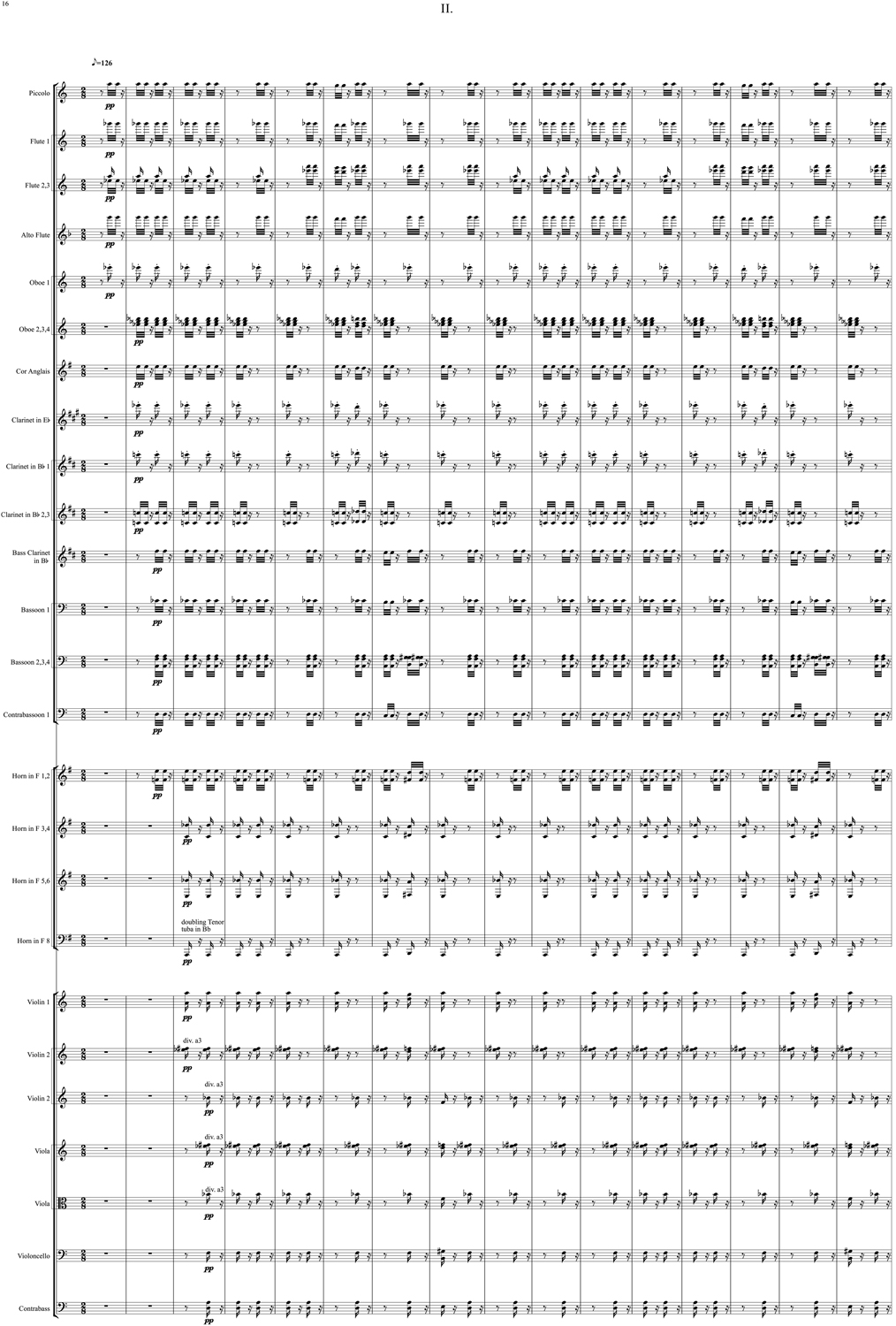rite, for large orchestra (2024)The material comes entirely from Stravinsky's Rite of Spring. In pieces I and III I always worked with a single bar, in piece II with a single page of the original score, whereby I shifted the bars of the individual parts against each other according to a procedural model of my own design.The work is part of a series that investigates the orchestration of classical works. I have chosen the Rite of Spring as a paradigm for the modern orchestral sound of the 20th century, whose main characteristics are polyphony and harsh dissonance. As a trained visual artist, I am looking for solutions to bring the flow of music to a standstill so that it can be observed in its spatial dimension. By shifting the time axis vertically with the instrumental sequences rotating around it, I create stagnation. In this way, the listener is released from following an arc of tension and allowed to immerse in the materiality of the sound instead. My sheet music is available through Frog Peak Music. 
rite, for large orchestra (2024)Das Material stammt vollständig aus Strawinskys Frühlingsopfer. Bei den Stücken I und III habe ich immer mit einem einzelnen Takt gearbeitet, bei Stück II mit einer einzelnen Seite der Originalpartitur, wobei ich die Takte der einzelnen Stimmen jeweils gegeneinander verschoben habe, nach einem selbst entworfenen Verfahrensmodell.Die Arbeit ist Bestandteil einer Serie, die sich mit der Orchestrierung klassischer Werke beschäftigt. Ich habe das Frühlingsritual als Paradigma für den modernen Orchesterklang des 20. Jahrhunderts gewählt, dessen Hauptmerkmale Polyphonie und harte Dissonanz sind. IAls ausgebildeter bildender Künstler suche ich nach Lösungen, um den Fluss der Musik zum Stillstand zu bringen, so dass er in seiner räumlichen Dimension beobachtet werden kann. Indem ich die Zeitachse in die Vertikale verschiebe und die instrumentalen Sequenzen um sie herum rotieren lasse, erzeuge ich Stagnation. Auf diese Weise wird der Hörer davon befreit, einem Spannungsbogen zu folgen, um stattdessen in die Materialität des Klangs einzutauchen. Meine Noten sind erhältlich bei Frog Peak Music. 
|
 score sample: 2nd movement.
score sample: 2nd movement. digital score realized by Ádám Baquais |